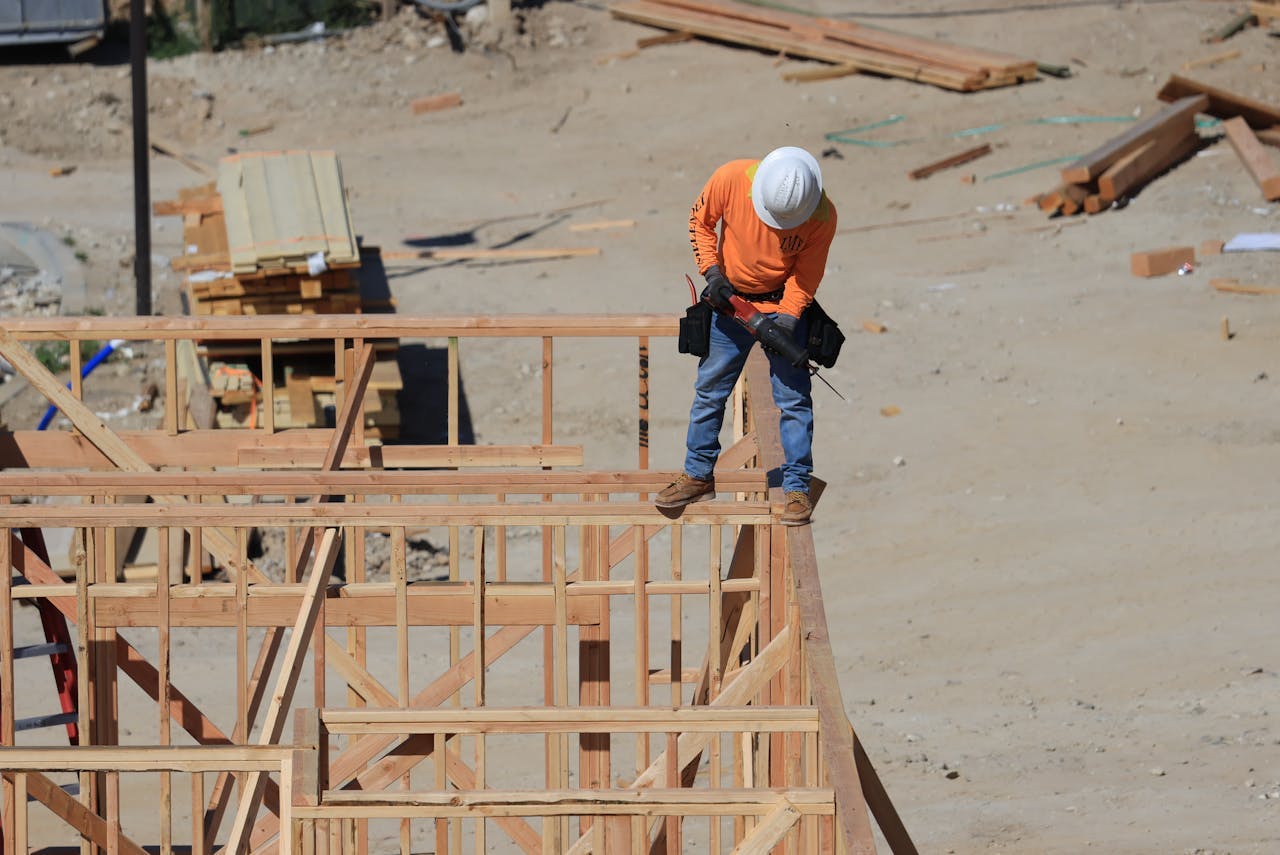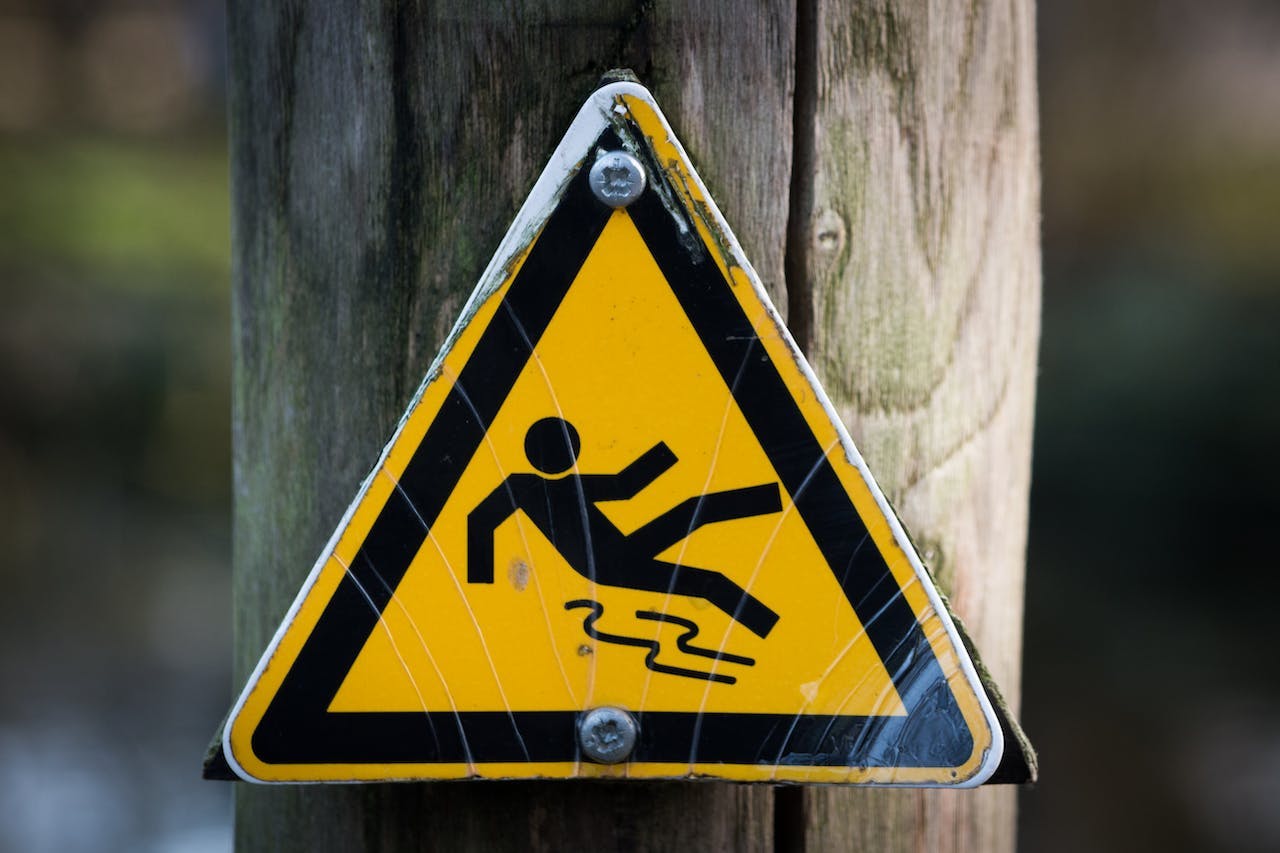The Occupational Safety and Health Administration (OSHA) ladder safety regulations are essential for preventing workplace injury or even death. Statistics from the Centers for Disease Control and Prevention (CDC) show that across all industries in the United States, 20% of fall injuries stemmed from the improper use of ladders. Narrowing that down even further, 81% of all construction accidents across America that require a visit to the emergency room are ladder-related.
Keep reading to learn how to enforce basic ladder safety in the workplace and keep your employees safe.
- Why is Ladder Safety Important?
- Does OSHA Require Ladder Inspections?
- When Not to Use a Ladder
- Safe Handling of Tools and Other Objects While Working On or Climbing a Ladder
- Ladder Safety, OSHA Rules and Regulations
- 1. Read the ladder label
- 2. Pre-use inspections are mandatory
- 3. Choose the right ladder for the job
- 4. Only use ladders for their designed purpose
- 5. You must maintain 3-point contact when climbing
- 6. The ladder must be free of slippery material
- 7. Stay off the top step
- 8. Keep the ladder steady while in use
- 9. Stable and level surface
- 10. Ladder angles
- 11. Gaining access to an elevated surface
- 12. Engage locks
- 13. Ladders near doorways or high-traffic areas
- Stay Compliant with OSHA Standards with monitorQA
Why is Ladder Safety Important?
Unsafe ladder usage can result in severe injury or death from a fall, electrical shock if using a metal ladder, and falling objects onto unsuspecting bystanders. Most ladder incidents result from improper use, lack of education on safe use and operation, or blatant neglect of the regulations.
Ladder safety is essential so employers and workers can minimize the risks of severe injury or death. Following common-sense regulations can save your employees’ lives and keep you from fines or prosecution.
Does OSHA Require Ladder Inspections?
This onus is on the employer, who must ensure that periodic inspections occur on ladders that employees frequently use. According to the 29 Code of Federal Regulations (CFR) 1910.23, the user must inspect the ladder before each use to ensure the ladder is in safe condition. The employer must inform employees of the user’s responsibilities regarding safe ladder use guidelines, rules, and regulations.

When Not to Use a Ladder
While common sense should be the main driving factor, here are a few circumstances where employees should not use ladders:
- When feeling sick
- When feeling tired
- In bad weather
- When on medications that warn against operating equipment
Safe Handling of Tools and Other Objects While Working On or Climbing a Ladder
The best practice is to keep hands free for climbing by storing tools in a waist or shoulder belt. Tools and other objects too heavy or awkward to bring up on the ladder should be roped or craned up after reaching the landing area.
When working from a ladder, use tool lanyards to prevent injuries below, and place proper signage or cones indicating overhead work.
Ladder Safety, OSHA Rules and Regulations
OSHA recommends the following rules and regulations when working with ladders:
1. Read the ladder label
The duty rating indicates the maximum weight the ladder can support; remember to include the weight of tools and equipment. According to the American National Standards Institute (ANSI), the five duty ratings and corresponding weights are:
- Light duty, type III – up to 200 pounds
- Medium duty, type II – up to 225 pounds
- Heavy duty, type I – up to 250 pounds
- Heavy duty, type IA – up to 300 pounds
- Heavy duty, type IAA – up to 375 pounds
2. Pre-use inspections are mandatory
The user must examine the ladder before every use to look for damage. Upon finding damage, the ladder must be tagged and taken out of service until repaired or discarded.
3. Choose the right ladder for the job
There are several styles of ladders (step, straight, extension, and more) and three different materials (wood, metal, and fiberglass). Assess the job to see which style and material will get the job done safely.
Important: Never use a metal ladder if there’s potential for electric shock. Fiberglass or wood ladders are better options because they don’t conduct electricity. Also, never use a step ladder as a straight ladder or in a position other than fully open and locked.

4. Only use ladders for their designed purpose
Never use a step ladder as a straight ladder or in a position other than fully open and locked. Don’t tie ladders together to obtain more height, use a ladder to make scaffolding, or use a ladder horizontally as a bridge.
5. You must maintain 3-point contact when climbing
Two feet and a hand, or two hands and a foot, is considered 3-point contact. Also, keep yourself in the center and always climb facing the ladder. This is where using tool belts to keep hands free is crucial.
6. The ladder must be free of slippery material
The ladder’s feet, steps, or rungs must be kept clear of anything that can cause a hand or foot to slip.
7. Stay off the top step
Never use the top step unless the ladder design allows it.
8. Keep the ladder steady while in use
Never try to move or shift a ladder with someone on it.
9. Stable and level surface
Always try to find a stable surface. Secure the ladder at the top and bottom if the surface is unlevel or unstable. Never set up a ladder on palettes, boxes, or anything else you can configure to gain height.
10. Ladder angles
Always place the base of the ladder one-quarter of the working length from the vertical surface. For example, if the working length is 12 feet, the ladder should be three feet from the vertical surface.
11. Gaining access to an elevated surface
A straight or extension ladder must extend three feet past the elevated surface.
12. Engage locks
Ensure both locks of an extension ladder have engaged on the corresponding rungs properly before climbing.
13. Ladders near doorways or high-traffic areas
Lock the door and use signage indicating ladder work when your ladder blocks a doorway. To avoid or prevent an incident in high-traffic areas, secure the ladder, then make a barricade to protect the ladder or have another worker stand guard.
Stay Compliant with OSHA Standards with monitorQA
Even though common sense prevails with most rules and regulations, getting employees on board with safe ladder use can be challenging.
monitorQA makes it simple. Our mobile inspection software keeps track of your entire inventory of ladders, their inspection dates and times, and why and when to pull a ladder out of service.
Keep your workers safe and stay OSHA compliant with monitorQA. Try it for free today.
last modified:09.17.24
Recent Posts

Top 5 Food Processing Industry Trends That Matter in 2025

Keeping Up With Compliance Trends 2025

Car Wash Safety: Regulations & Best Practices You Need to Know

Fall Hazards At Work: How To Keep Your Employees Safe

The High Price of Neglect: OSHA Violations and Penalties

Expert Advice on Preventing Workplace Electrical Hazards

Slips, Trips and Falls in the Workplace: Best Practices

HSEQ Audit: The Complete Guide

Improve Safety: Inspection Management Software Benefits

Promoting Safe and Productive Working Environments: Occupational Health & Safety Tips to Consider
